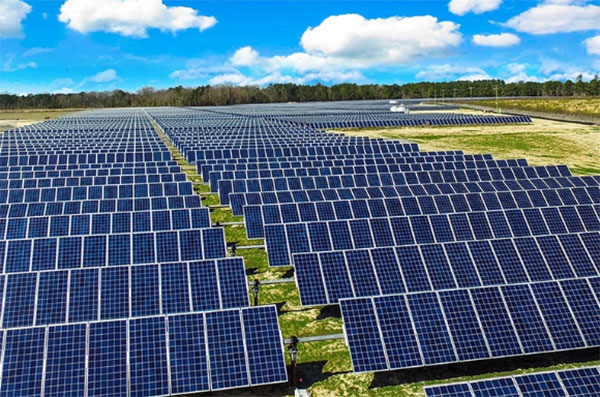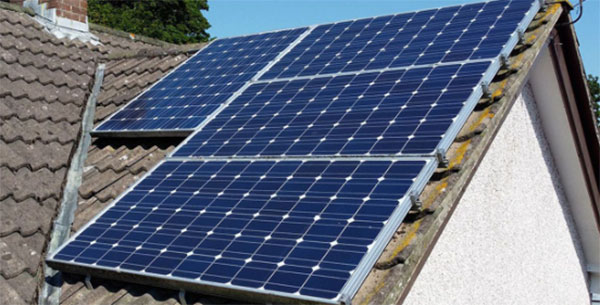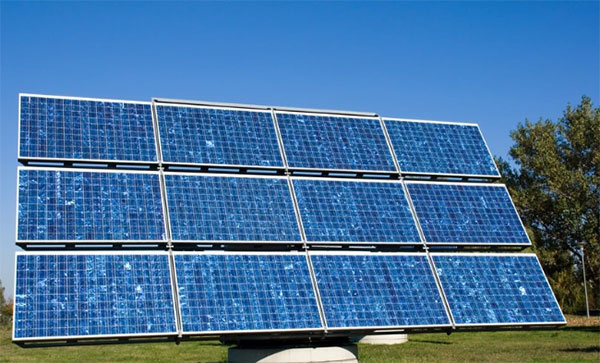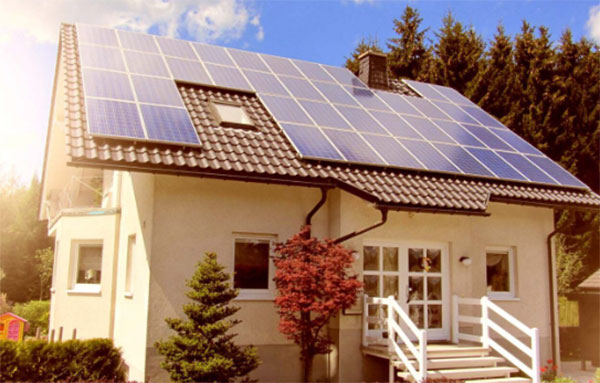Description
A standard silicon solar cell typically produces a voltage of about 0.5 to 0.6 volts under optimal conditions.Understanding Solar Cell Technology
Silicon solar cells are a cornerstone of photovoltaic technology, widely used for converting sunlight into electrical energy. At their core, these cells utilize the photovoltaic effect, where light energy creates an electrical current in a semiconducting material. The efficiency of silicon solar cells, typically ranging from 15% to 22%, is a crucial factor determining their energy output and overall utility in solar applications.Composition and Design of Silicon Solar Cells
Silicon solar cells are made primarily of crystalline silicon, a material chosen for its favorable electronic properties and abundance. The design of these cells often involves a p-n junction, where two types of silicon (p-type and n-type) are combined to create an electric field. This field is essential for directing the flow of electrons, generated by light absorption, into a current. The dimensions of standard silicon solar cells are generally around 156mm square, though variations exist depending on the application. The thickness of the silicon wafer in these cells usually ranges from 160 to 240 micrometers, balancing the need for efficiency and material savings.Cost and Longevity Considerations
Cost is a significant factor in the adoption of silicon solar cells. With advancements in manufacturing technology, the price per watt of solar energy has drastically reduced over the years, making it more competitive with traditional energy sources. As of the latest data, the cost can be below $0.20 per watt. The lifespan of silicon solar cells is another critical aspect, with most cells having a warranty of 25 years. However, they can often continue to function efficiently well beyond this period, albeit with slightly reduced output. In terms of speed, the response time of silicon solar cells to light is almost instantaneous, which is essential for consistent energy generation. However, their performance can be hindered by factors such as shading, dust, and temperature extremes. Materials used in the construction of silicon solar cells, besides silicon, include anti-reflective coatings and conductive metals for electrodes. These materials are selected for their durability, conductivity, and compatibility with silicon. Advantages of silicon solar cells include their relatively high efficiency, durability, and the vast, established manufacturing infrastructure. However, disadvantages like their indirect bandgap, weight, and rigidity are noteworthy, especially when considering newer thin-film technologies.Electrical Characteristics of Silicon Solar Cells
Silicon solar cells, a critical component in photovoltaic technology, exhibit specific electrical characteristics that dictate their performance and suitability in various applications.Principles of Voltage Generation in Solar Cells
The fundamental principle behind voltage generation in silicon solar cells lies in the photovoltaic effect. When sunlight hits the silicon material, it energizes electrons, freeing them from their atomic bonds. This process creates a flow of electric current when the cell is connected to an external load. Each silicon solar cell typically produces a nominal voltage of about 0.5 to 0.6 volts under standard test conditions. The efficiency of voltage generation in these cells is a key metric. The average efficiency ranges from 15% to 22%, depending on the cell's design and the quality of silicon used. High-purity, single-crystal silicon cells tend to achieve higher efficiencies compared to polycrystalline silicon cells.Factors Influencing the Voltage Output
Several factors significantly impact the voltage output of silicon solar cells:- Light Intensity: The amount of sunlight falling on the cell directly affects the number of electrons excited and, consequently, the voltage output. Higher light intensity typically leads to a higher voltage.
- Temperature: Silicon solar cells are sensitive to temperature changes. As the temperature rises, the voltage output decreases. This characteristic is quantified by the temperature coefficient, a vital parameter in the solar cell's datasheet.
- Material Quality: The purity and crystalline structure of the silicon used in the cells also play a crucial role. Higher purity and better-structured materials (like monocrystalline silicon) generally result in a more efficient and stable voltage output.
- Cell Design: Innovations in cell design, including passivated emitter and rear cells (PERC), bifacial cells, and multi-junction cells, can enhance voltage output by improving light absorption and electron collection efficiency.
- Shading and Dirt: Partial shading of the cell or dirt accumulation can lead to a significant drop in voltage output. This effect underscores the importance of proper placement and maintenance of solar panels.
Measuring and Analyzing the Voltage of Silicon Solar Cells
In the realm of solar technology, accurately measuring and analyzing the voltage of silicon solar cells is crucial for assessing performance and efficiency.Tools and Techniques for Voltage Measurement
Voltmeters and Multimeters: The most common tools for measuring the voltage of silicon solar cells are voltmeters and multimeters. These devices, when connected to the solar cell's terminals, provide a direct reading of the voltage output. The precision of these tools can vary, with some high-end models offering accuracy within a few millivolts. I-V Curve Tracers: For a more comprehensive analysis, I-V curve tracers are used. These devices measure both the current (I) and voltage (V) output of the solar cell, plotting an I-V curve that reveals essential performance characteristics like open-circuit voltage (Voc) and short-circuit current (Isc). The shape and position of this curve are critical for understanding cell efficiency and identifying potential issues like shading or material defects. Data Loggers: In long-term performance studies, data loggers are employed. These devices record voltage over time, providing valuable insights into the solar cell's behavior under varying environmental conditions. This time-series data is crucial for understanding how factors like temperature and light intensity affect daily and seasonal performance.Interpreting Voltage Data for Silicon Solar Cells
Analyzing Efficiency: The voltage data, when combined with current measurements, helps in calculating the cell's efficiency. The maximum power point (MPP), where the product of current and voltage is highest, is a key metric derived from this data. Environmental Impact Assessment: Voltage variations over time can indicate how environmental factors like temperature and light intensity impact the cell's performance. A consistent drop in voltage on hot days, for instance, might suggest high temperature sensitivity. Quality and Lifespan Indicators: Long-term voltage trends can serve as indicators of the solar cell's quality and lifespan. A gradual decrease in voltage output over years could signal aging or wear of the cell, necessitating maintenance or replacement.Comparative Analysis of Silicon Solar Cell Voltage
Understanding how silicon solar cells compare with other photovoltaic technologies is key to assessing their suitability for various applications.Silicon Solar Cells vs. Other Photovoltaic Technologies
| Feature/Technology | Silicon Solar Cells | Thin-Film Solar Cells | Perovskite Solar Cells |
|---|---|---|---|
| Efficiency | 15-22% | 10-13% for amorphous silicon; up to 21% for CdTe and CIGS | Up to 25% |
| Cost | Moderate, declining due to technological advancements | Generally lower due to less material usage | Potentially low, but still under development |
| Lifespan | Around 25 years | 10-15 years for amorphous silicon; longer for CdTe and CIGS | Still being studied; current estimates are lower than silicon |
| Material Quality | High-purity, crystalline or polycrystalline silicon | Amorphous silicon, Cadmium Telluride (CdTe), Copper Indium Gallium Selenide (CIGS) | Hybrid organic-inorganic lead or tin halide based material |
| Environmental Impact | Energy-intensive manufacturing; recyclable | Thin films use less material but can involve toxic elements (e.g., cadmium in CdTe) | Uses less toxic materials, but long-term environmental impact still under research |
| Advantages | Well-established technology, highly efficient, robust | Flexible, lighter, less affected by high temperatures | High efficiency potential, flexible, can be produced with simpler techniques |
| Disadvantages | Indirect bandgap, rigid, heavy | Lower efficiency, shorter lifespan | Durability and scalability issues, sensitivity to moisture and temperature |
Impact of Environmental Factors on Voltage Efficiency
Environmental factors play a significant role in the efficiency and voltage output of solar cells. Understanding these impacts is essential for optimizing solar cell performance:- Temperature: High temperatures can decrease the voltage output of silicon solar cells. This effect is less pronounced in thin-film technologies, such as amorphous silicon and CdTe, due to their different temperature coefficients.
- Light Intensity: All solar cells perform better with increased light intensity. However, silicon solar cells are more efficient in converting intense sunlight into electricity compared to some thin-film varieties.
- Shading and Dirt Accumulation: Partial shading can significantly reduce the voltage output of all types of solar cells. Silicon solar cells, arranged in series, are particularly vulnerable to shading effects.
- Atmospheric Conditions: Humidity and air pollution can affect solar cell performance. Silicon cells are generally well-protected against these factors, whereas perovskite cells can be sensitive to moisture.
Optimizing the Voltage Output of Silicon Solar Cells
Maximizing the voltage output of silicon solar cells is crucial for enhancing overall efficiency and making solar power more competitive.Technological Enhancements for Improved Voltage
Several technological advancements have been instrumental in optimizing the voltage output of silicon solar cells:- Passivated Emitter and Rear Cell (PERC) Technology: This design increases efficiency by adding a passivation layer at the rear of the cell, which leads to better light capture and electron flow.
- Anti-Reflective Coatings: Applying anti-reflective coatings to the surface of solar cells reduces light reflection, allowing for more light absorption and increased voltage output.
- Bifacial Solar Cells: These cells can capture sunlight from both sides, significantly boosting their voltage output and overall efficiency.
- Multi-Junction Cells: By stacking multiple layers of photovoltaic materials, each targeting different light spectra, multi-junction cells achieve higher voltage outputs than traditional single-junction silicon cells.
- Improved Electrical Contacts: Optimizing the design and material of electrical contacts reduces resistance, thus enhancing voltage output.
Case Studies: High-Performance Silicon Solar Cells
Several notable case studies demonstrate the effectiveness of these enhancements:- Case Study 1: PERC Solar Cells: A solar farm utilizing PERC technology reported an increase in efficiency by up to 5% compared to traditional cells, translating to significantly higher voltage output and power generation.
- Case Study 2: Bifacial Solar Panels: In a commercial installation, bifacial panels showed a 10-20% increase in energy yield over standard panels, thanks to their ability to capture reflected and diffuse light.
- Case Study 3: Multi-Junction Silicon Cells: Research facilities have developed multi-junction cells with efficiencies exceeding 35%, far above the average for standard silicon cells. These cells demonstrate the potential for much higher voltage outputs in concentrated solar power applications.








